#160 January Status Report
January 12, 2021
With the end of the most unusual year 2020, I thought it a would be good to take a look back, not at 2020, but farther back to happier times. There is a lot of “art” in the EJ layout. I’m talking about things that are beautiful or have emotional content, are technically impressive, or serve as joyful reminders of the past.
To showcase some of that art, I’ve selected ten elements from the EnterTRAINment Junction (EJ) layout which I believe are sufficiently impressive and readily deserve to be called “art.”
Number 10: The model of the dirigible airship USS Akron, hanging over the mezzanine shelf by the big locomotive wheel mockup. It’s beautifully executed and quite large, even though it is about one fifth the size it would be if it had been built to match the 1/24th scale of much of the rest of the layout. The smaller scale makes it look much more realistic above the layout, appearing to be higher and farther away than it actually is. The Akron was built in its namesake city in 1931, and could have been seen in Midwest skies during its operational period, which ended in 1933. That makes its placement consistent with the layout’s Middle Period.
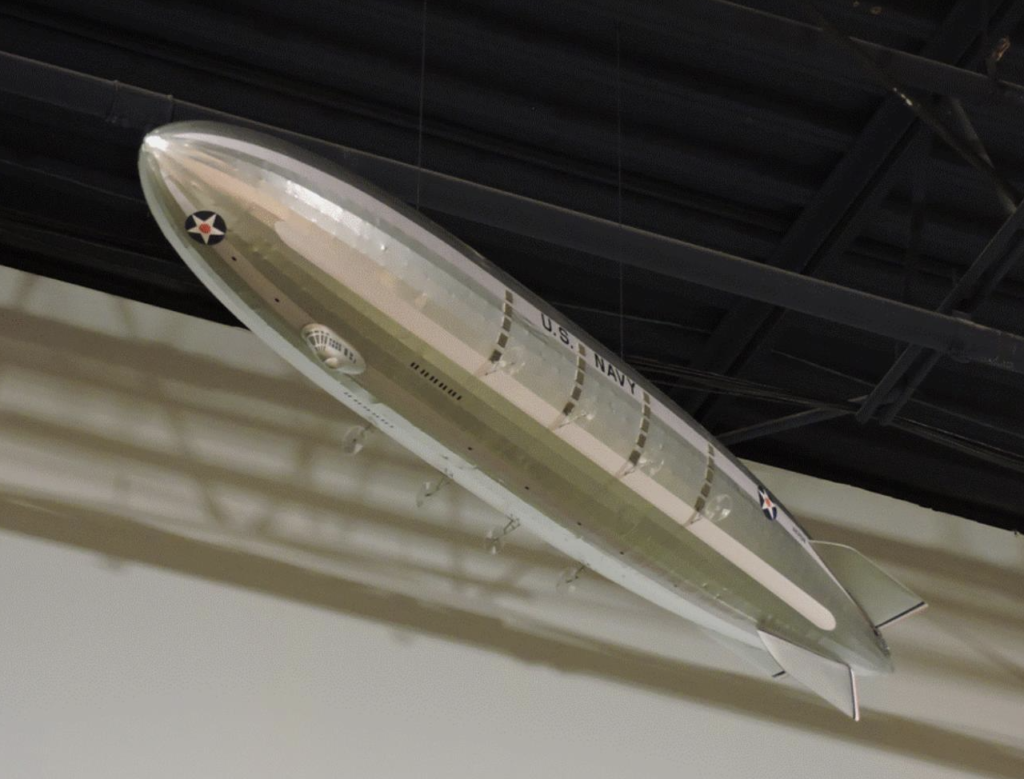
Number 9: The drive-in theater across from the mezzanine elevator. This scenic element first appeared on the layout three months after EJ opening in August of 2008. Since then, it has had several makeovers, with the most recent adding a functional screen, showing the ubiquitous adds for snacks (Figure 2), as well as snippets from several classic movies. In the small space it occupies, in includes most of the recognizable features of drive-ins from the Middle Period, including a boy trying to crawl in under the fence. The level of details and the variety of details included make it a superb representation of days gone by. The model, of course, does not include all of the much larger drive-in, whose main area is truncated by the EJ aisle and left to the viewer’s imagination.
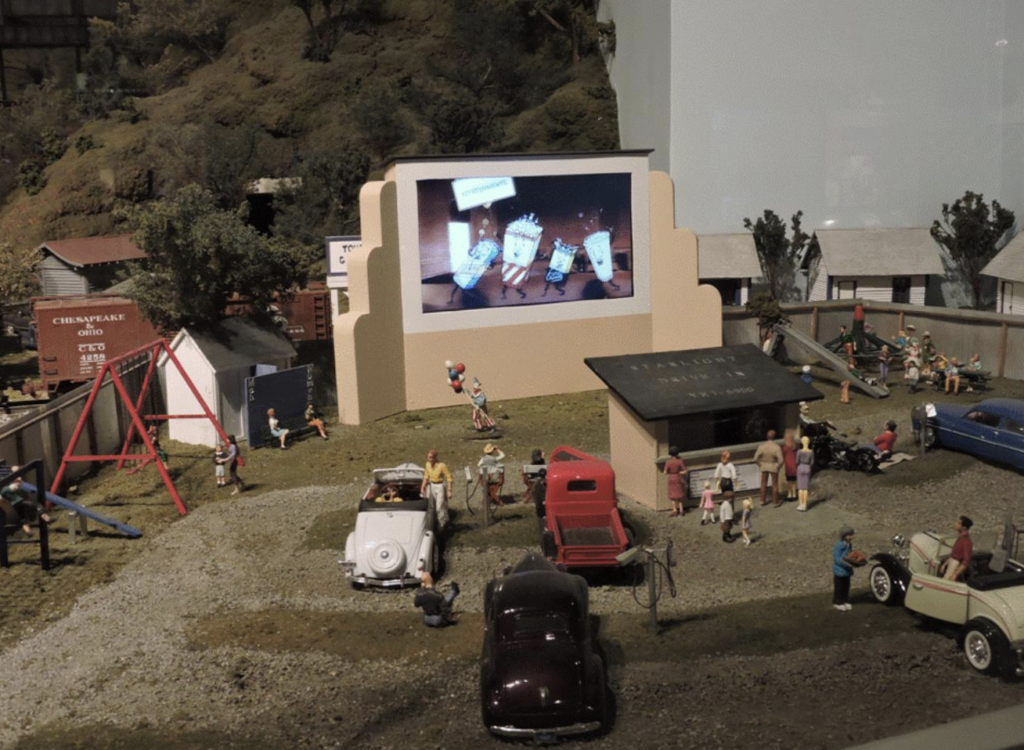
Number 8: The Hot Air Balloon, just past the aisle tunnel by the restrooms. This feature had been included it the EJ plans from the beginning, but it wasn’t implemented until much later, in early 2012, when the mechanical elements for controlling the balloon’s movement had been adequately worked out. The balloon operates in rising and descending “flight” with appropriate sound effects. It’s an immediate attention getter as visitors emerge from the intermediate tunnel in the Modern Period.
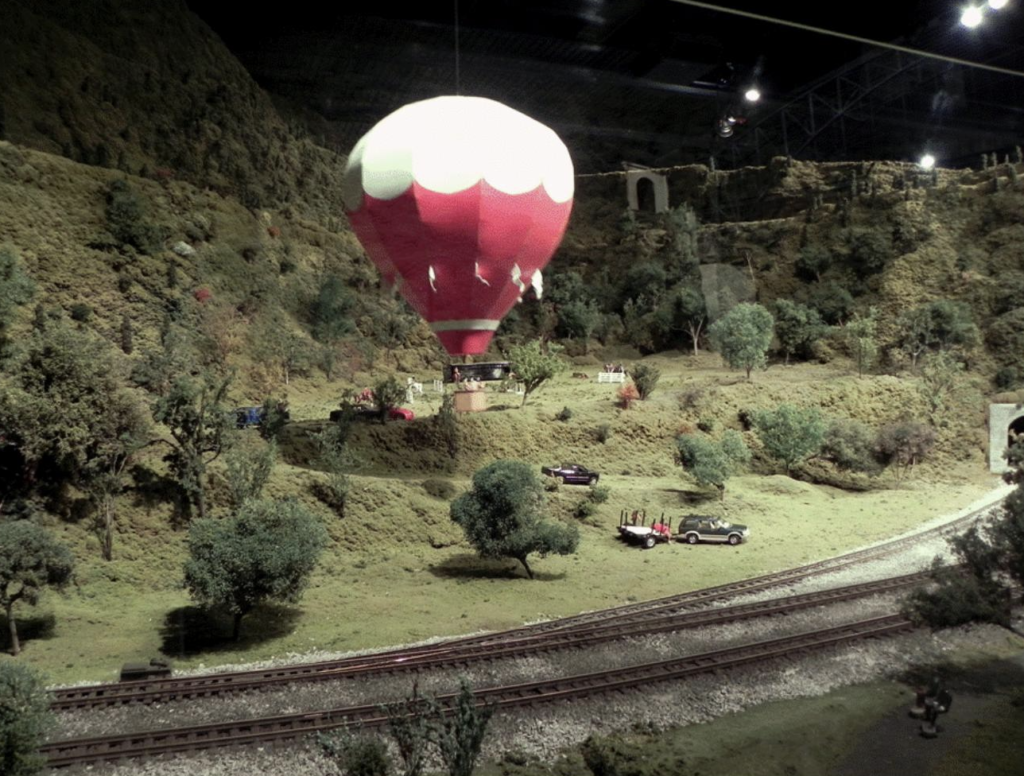
Number 7: The operating turntable in the Middle Period engine servicing facility (Figure 4). The roundhouse and turntable have been included in the layout from the beginning, but it took several years of effort by a dedicated team of volunteers before the complex electrical, mechanical, and computer operating methodology had been perfected sufficiently to allow this, now fully functional automated system, to earn its way onto the layout in 2013.
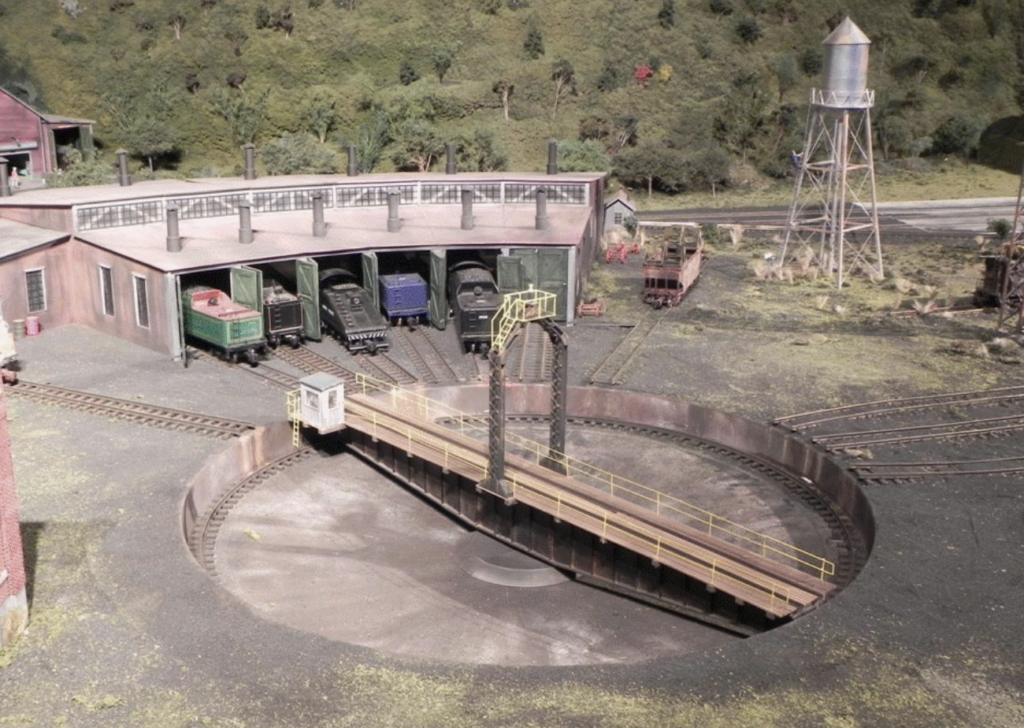
Number 6: Krumbein’s and Holsum’s stores by the Middle Period Engine Servicing Facility (Figure5) . When this building with its dry goods store, grocery store, and lawyer’s office was added to the layout in 2010, it set the standard, and a very high one at that, for modeling interior and exterior details for the layout. Its location, very close to the EJ aisle, made its plethora of magnificent details readily viewable by EJ customer (and EJ volunteers too). Personally, it blew me away! Not only were the major details there, but, so were the little things (the butcher’s meats, the wall of shoes with its rolling ladder, the labelled shopping bag in the customer’s hand, the groceries in crates out front, the signage, and on and on). And the lighting was superbly done, reflecting the period. There is so much to see and appreciate in so small a space, it’s amazing!
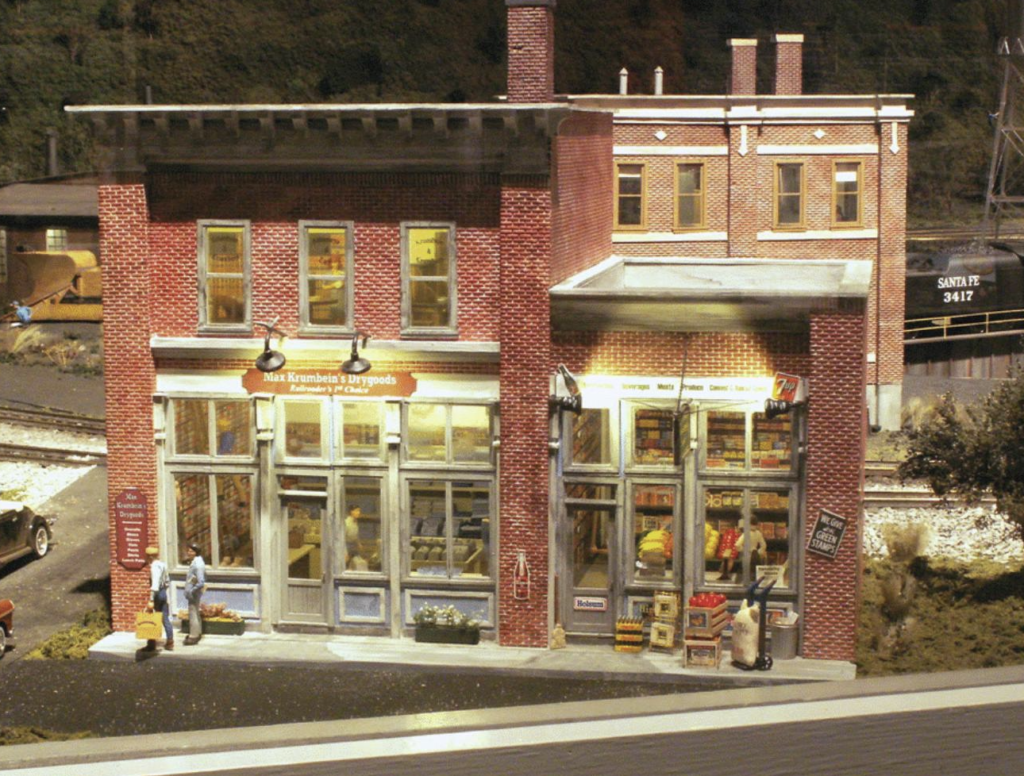
Number 5: The Modern City Sky Tower. Toward the end of 2010, the Modern City underwent a major revision. One of the major problematic elements was one of the columns supporting the EJ roof rising out of a fairly central location in the city. The brilliant solution was to camouflage it as the support for a sky tower and viewing platform, reminiscent of Seattle’s Space Needle. With its appropriate lighting, the viewing platform hides the rest of the column above it, and provides an eye-catching element of modernity to the city.
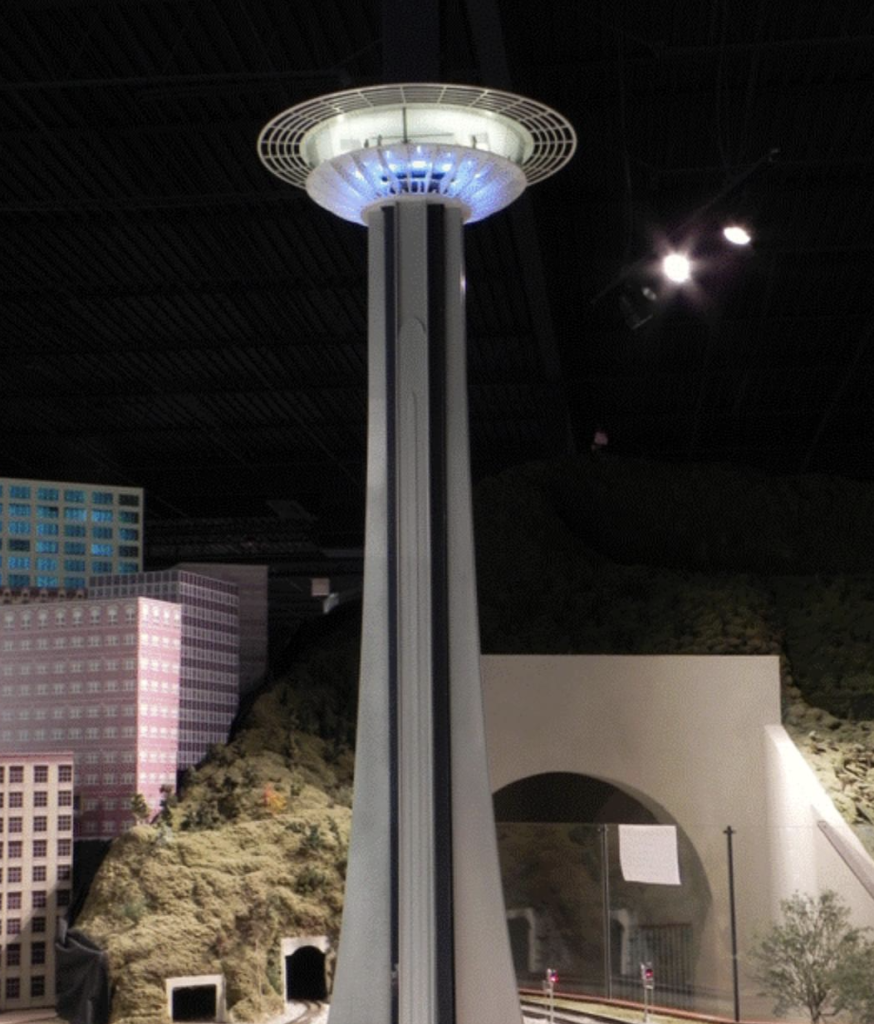
Number 4: The Modern City Lift Bridge. This feature has been on the layout from the beginning. Its purpose was to connect the Modern City with the industrial area across the EJ aisle from it. While there were discussions about making it functional, there was no realistic and safe way to do so, because it would have impacted traffic on the EJ aisle. Note in Figure 7, that the clear plastic barriers have not yet been installed atop the aisle walls. They too would have inhibited making this bridge functional. Nevertheless, the structure is an outstanding representation of structures like it, use by railroads in many locations and serves its purpose well, appearing to connect an otherwise “orphan” area to the main layout.
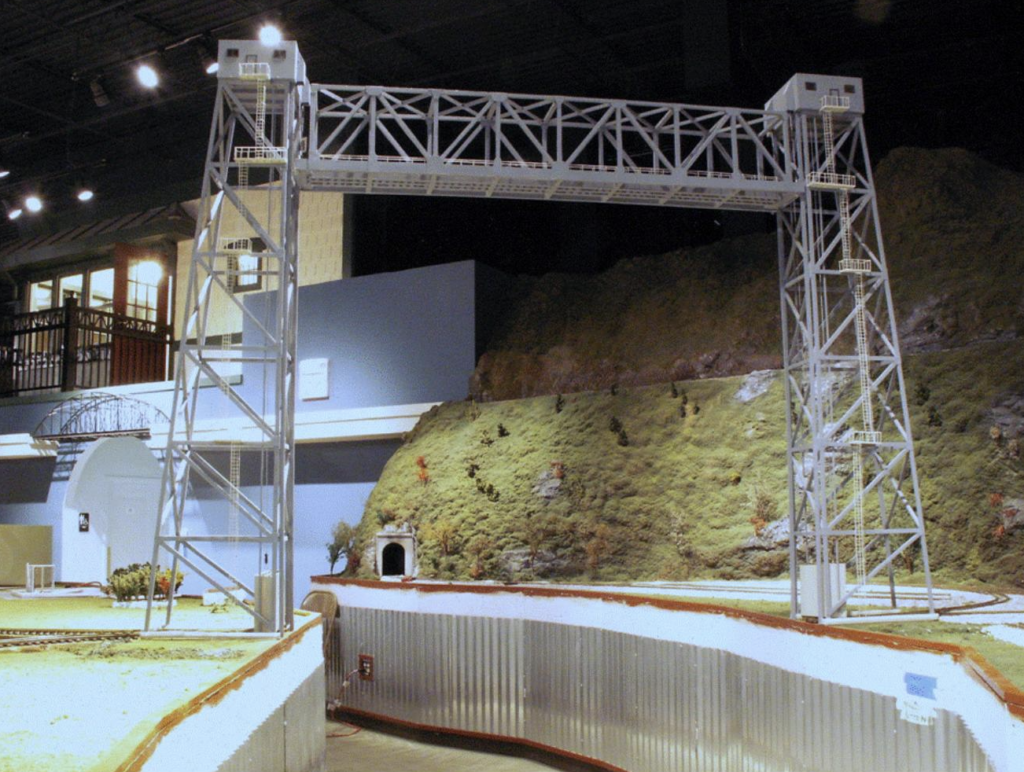
Number 3: The Riverboat City of Monroe at the lake in the Early Period. This model was another one of those gorgeous eye-popping, jaw-dropping additions to the layout, with its superb details, and lots of them. It dates back to early 2009. Makes you want to start singing “Old Man River.”
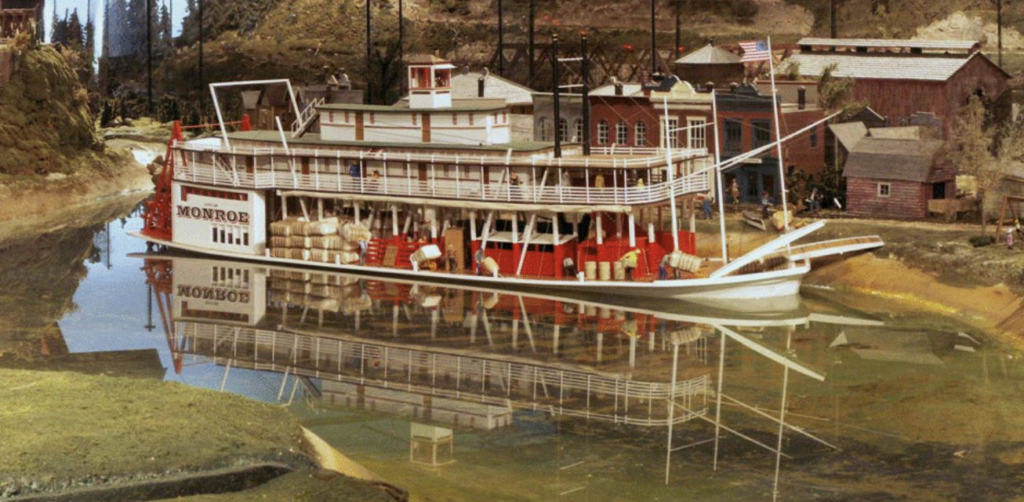
Number 2: The “Shooting Star” roller coaster in the Coney Island model on the mezzanine. This model is spectacular just in its very size, and then, it works too, just like a real roller coaster! The cars are raised up the sloped incline and then roll freely as they convert their potential energy into momentum and back several times, which carries them all the way around the circuit. Figure 9 shows the coaster after its first installation on the mezzanine display area. The plug on the extension cord and the power strip provide some reference to the size of this replica.

Number 1: The high bridge at Mott Junction. This is THE iconic structure that welcomes visitors into the EJ layout. It is spectacular in size, superb in detail, and gorgeous in appearance! It has been on the layout since before opening day. It was built by just one very dedicated and expert volunteer, a professor of engineering at the University of Dayton. He passed his love of trains on to his son, who, in collaboration with his model railroading friends built the structures for the town of Mott Junction, seen below the bridge in Figure 10.
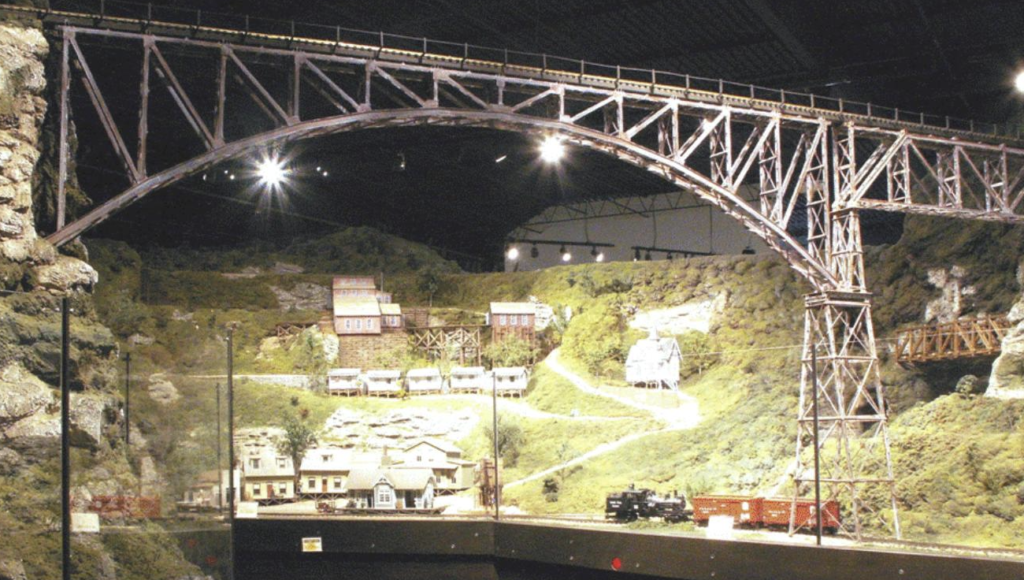
The dedication, talent, and attention-to-detail which the EJ volunteers and contributors have applied to the layout have created not only these individual works of art, but also the overall EJ community’s collective integrated work of art, the layout itself. All is available for your enjoyment, come visit it, stay a while, and go away happy, promising to return.
© 2020 Tom Bartsch
MVGRS Big Train Project Coordinator

 Tickets
Tickets Parties
Parties Shop
Shop Directions
Directions